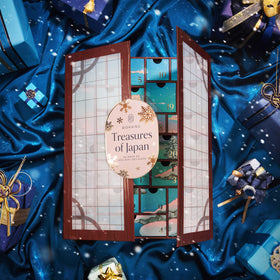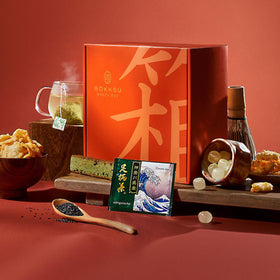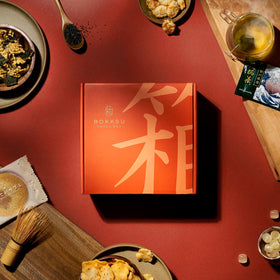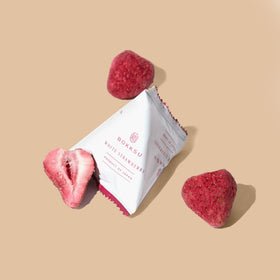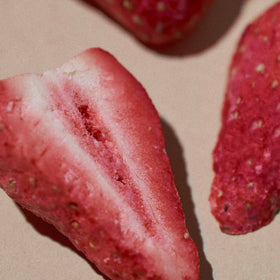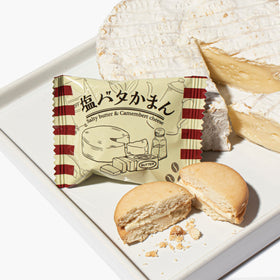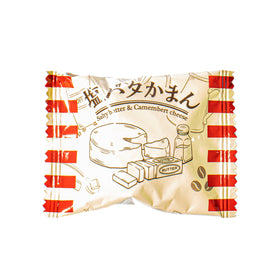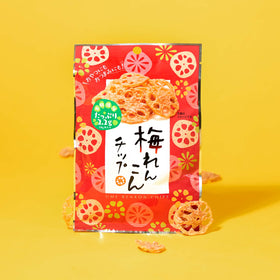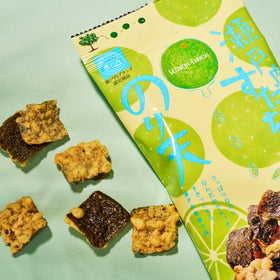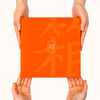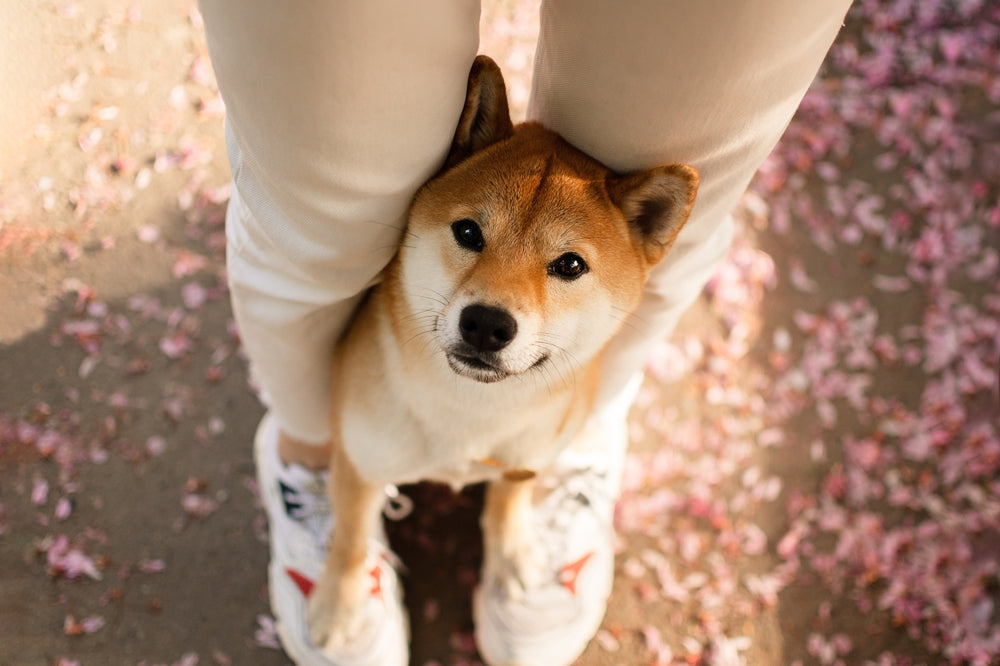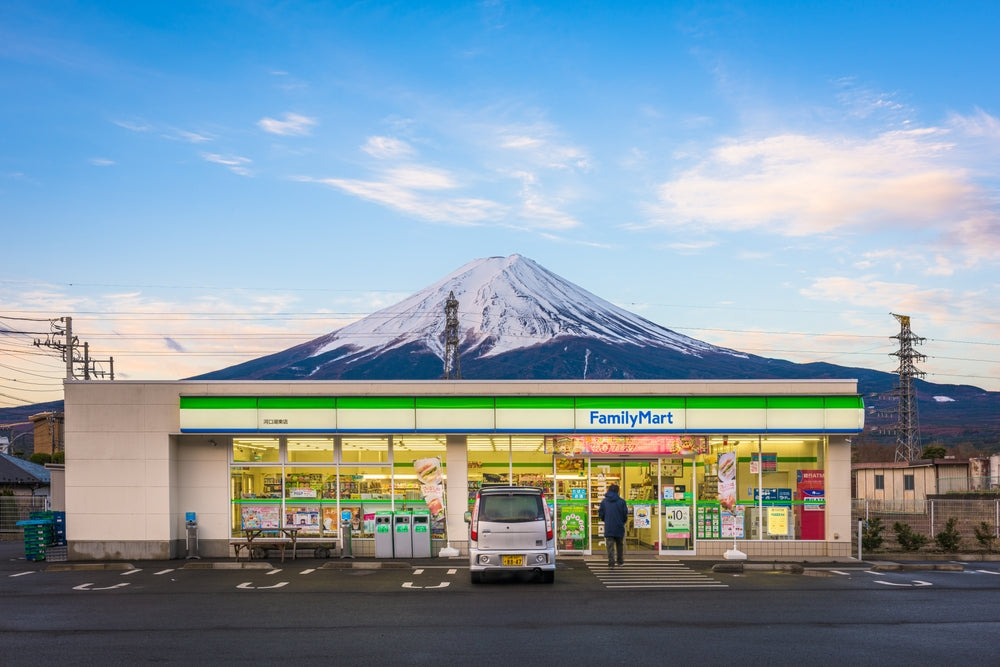Snack Time Travel: From Ancient Sweets to Modern Munchies
The Origins of Snacking in Japan
The history of Japanese snacks is a rich and fascinating journey that goes back centuries, closely tied to the country's food culture and traditions. During the Heian period (794-1185), snacking was a luxury mostly reserved for the aristocracy. They especially enjoyed mochi, soft, pounded rice cakes, often during seasonal festivals and religious ceremonies. Special sweets like botamochi in spring and ohagi in autumn, both sticky rice covered in sweet red bean paste, were commonly prepared during the Higan periods (spring and autumn equinoxes) as offerings to ancestors.
By the Edo period (1603-1868), snacking spread to the general public, though white sugar was still a luxury only the wealthy could afford. Because of that, people got creative, using things like starch syrup, millet, and other budget-friendly ingredients. This led to the creation of senbei (crispy rice crackers) and dagashi—cheap, colorful sweets often wrapped in fun packaging and sometimes even including a little toy. hese stood in contrast to the more refined jogashi, which were made with sugar and considered more high-end. Then came the Meiji era (1868–1912), which brought big changes: sugar became more widely available, and Western influences started to shape Japanese food culture. Snack options exploded. While Western snacks tend to stick to familiar flavors like chocolate, cheese, or BBQ, Japanese snacks are known for their bold and sometimes unexpected flavors that reflect the country’s diverse food traditions.
Wagashi: The Art of Traditional Japanese Confections

Wagashi, Japanese traditional sweets, are more than just treats; they’re an art form with deep roots in the country’s culture and cuisine, especially when it comes to the Japanese tea ceremony. Carefully crafted to match the taste of green tea and reflect the mood of each season, these sweets are all about balance and beauty. Many wagashi feature ingredients like rice flour, but at the heart of them is often anko, a sweet bean paste made from boiled azuki beans. Anko shows up as a filling, topping, or core in favorites like daifuku, dorayaki, and manju. While wagashi had earlier beginnings, it was during the Edo period that they really came into their own, focusing on natural, plant-based ingredients and seasonal expression through color, shape, and flavor. Whether you’re enjoying one during a peaceful tea break or as part of a festive occasion, wagashi offers a refined, almost poetic glimpse into Japaese food culture.
Edo-Era Delights: Street Snacks for the Masses

During the bustling Edo period, street snacks became an essential part of Japanese cuisine, offering quick, affordable treats to the general public. One of the all-time favorites was senbei—crispy rice crackers that came in all sorts of shapes and flavors. Some were savory and brushed with soy sauce, others were sweet, and a few were even wrapped in nori (seaweed) for an extra kick of flavor. Alongside senbei, there were dagashi, or “penny candies”—a colorful, nostalgic collection of inexpensive snacks. Sold in small portions for just a few yen, dagashi brought joy with everything from candy and chocolate to gum, chips, and even dried seafood, all packed in bright, playful wrappers that made snacking fun and affordable.
Another comforting favorite, especially during chilly winters, was red bean soup. Once believed to have medicinal benefits, it became more popular as sugar became easier to get, eventually turning into a sweet, warming dish enjoyed both at home and during seasonal festivals. Together, these simple but satisfying snacks reflected the creativity, resourcefulness, and joyful spirit of everyday life in Edo.
The Meiji Period and Western Influence on Snacks

During the Meiji period, as Japan opened up to the West and embraced modernization, Japanese sweets started to evolve in exciting new directions. One of the most popular Western imports was castella cake—a soft, golden sponge cake originally brought over by Portuguese traders in the 16th century. With sugar becoming more widely available and people growing more curious about foreign flavors, castella quickly became a favorite. Shops like the iconic Bunmeido in Nagasaki helped spark a castella craze that still lives on today.
At the same time, caramel also captured people’s hearts with its rich, melt-in-your-mouth texture. Before long, caramel began showing up in local variations and was blended into uniquely Japanese snacks, mixing old traditions with fresh flavors. This era was a turning point when foreign tastes started blending effortlessly with native ingredients, expanding the world of Japanese sweets and laying the groundwork for the diverse and inventive snack culture Japan is famous for today.
Post-War Boom and the Birth of Mass-Produced Treats
After World War II, Japan entered a period of rapid industrialization and economic growth that reshaped everyday life, including how people enjoyed snacks. With modernized factories and better distribution networks, packaged snacks became more widely available, leading to the rise of iconic Japanese snack brands that are still popular today. Calbee, founded in 1949, quickly became a household name thanks to its crispy potato snacks like Jagabee and JagaRico, which offered savory snacks that appealed to a new generation. Meanwhile, Pocky, with its simple but irresistible crunchy biscuit sticks coated in chocolate or other flavors, won over people both in Japan and around the world. These brands helped shape a new era of Japanese snacking—one that combined innovation with comfort, creating products that remain favorites today and continue to be enjoyed by generations everywhere.
Pop Culture Meets Snacking: From 80s to Now

Starting in the 1980s, Japan saw a creative fusion of pop culture and snacking that transformed everyday snacks into collectible treasures. Popular Japanese snacks began teaming up with anime, mascots, and character branding, sparking a collector culture that made a trip to the candy aisle feel like an adventure. One of the most iconic examples is Peko-chan, the cheerful mascot of Fujiya's Milky candy and one of Japan's oldest mascot. Originally created to lift spirits in post-war Japan, when milk and candy were still considered luxuries, Peko quickly captured the hearts of the nation. Although she first appeared in the 1950s, Peko-chan took on even more personality in the 1980s, when Fujiya introduced different versions of her. The blue-overalled Milky Peko was designed specifically to represent the candy brand, while the original red-overalled Peko remained the symbol of the Fujiya company as a whole.
Around the same time, Umaibo, a puffed corn snack that hit the shelves in 1979, won over snack lovers with its super low price and bold, playful flavors. Its mascot, Umaemon, was a fun nod to the anime icon Doraemon, and the colorful, cartoon-style packaging made snack time feel like part of a comic adventure. These days, Japanese snack brands often collaborate with anime and pop culture characters, releasing limited editions and special flavors that keep things fresh and exciting. For fans of all ages, snacking has become more than just eating but also about collecting, discovering new favorites, and enjoying a bit of fun with every bite.
Seasonal and Regional Flavors: A Uniquely Japanese Tradition

In Japan, a love for seasonality and regional pride goes beyond meals to snacks, where every bite celebrates a time and place. This attention to change and local flavor is a big part of Japanese culture, inspiring snack makers to create treats that capture the spirit of the seasons or a region’s specialty. From spring’s sakura KitKats to autumn’s roasted sweet potato chips and winter-only matcha chocolates, limited editions show Japan’s appreciation for change and subtlety. Alongside these are more traditional Japanese flavors like yuzu, kinako (roasted soybean flour), and wasabi, often showcased in region-specific treats that double as edible souvenirs. This ever-changing world of seasonal and regional snacks keeps shelves fresh and turns everyday snacking into a flavorful journey through Japan’s rich culture and cuisine.
Packaging as Experience: How Design Became Part of the Snack

In Japan, snack packaging tells a story of its own, turning design into a key part of the snacking experience. This tradition goes back to dagashi shops—small, family-run candy stores once found in neighborhoods across the country. These shops were packed with cheap snacks and tiny toys, usually priced between 10 and 100 yen, all wrapped in bright, cartoon-filled packaging. Take ramune, the classic fizzy soda sealed with a marble. Its colorful, retro design brings an instant sense of nostalgia and childhood joy. Today, that same love for eye-catching design lives on. Snack wrappers often blend traditional Japanese patterns like waves, cranes, and cherry blossoms with modern typography or pop culture tie-ins. Whether it’s a nod to the past or a fresh design made for Instagram, the packaging adds to the snack’s charm, blending tradition with modern creativity in a way that reflects Japan’s ever evolving food culture.
The Modern Era: Health Trends, Fusion Flavors, and Global Reach
Today’s Japanese snacks are a brilliant combination of old and new, where traditional ingredients meet modern trends to create something truly special. From matcha-infused cookies to yuzu mochi and black sesame brittle, these treats take the essence of Japanese desserts and reimagine them for contemporary tastes. What really sets them apart isn’t just the quality, but the creative flavors that surprise and delight, even for longtime snack lovers. Thanks to global platforms like Bokksu, which curates and delivers artisanal snacks straight from Japan, more people around the world can enjoy this unique mix of tradition and innovation.
Rediscover Japan’s Snack Evolution with Bokksu

Ready to snack your way through Japan? The Bokksu Snack Box subscription is like a tasty passport to Japanese culture, delivering a handpicked mix of treats each month that showcase the country’s regional flavors, seasonal goodies, and modern favorites. From delicate sakura mochi in spring to savory seaweed crackers from coastal towns, every box tells a unique story rooted in tradition and made with care by local artisans. Whether you're a longtime fan of Japanese snacks or just beginning your journey, Bokksu invites you to experience Japan’s snack culture firsthand, one bite at a time.
Author Bio




